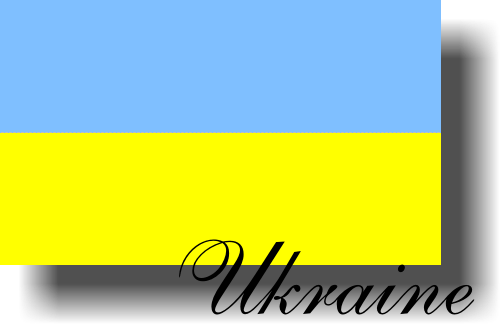|
General Information
Country name: (conventional long form) none,
(conventional short form) Ukraine
Area: 603 700 sq km
Population: 47 732 079 (2004)
Capital: Kiev
Population: 2 611 327 (2001)
Administrative divisions: (24 oblasti (singular - oblast'),
1 autonomous republic* (avtomnaya respublika), and 2 municipalities (mista, singular - misto)
with oblast status**) Cherkas'ka (Cherkasy) (1), Chernihivs'ka (Chernihiv) (2),
Chernivets'ka (Chernivtsi) (3), Dnipropetrovs'ka (Dnipropetrovs'k)(4), Donets'ka
(Donets'k) (5), Ivano-Frankivs'ka (Ivano-Frankivs'k) (6), Kharkivs'ka (Kharkiv)
(7), Khersons'ka (Kherson) (8), Khmel'nyts'ka (Khmel'nyts'kyy) (9),
Kirovohrads'ka (Kirovohrad) (10), Kyyiv**, Kyyivs'ka (Kiev) (11), Luhans'ka
(Luhans'k) (12), L'vivs'ka (L'viv) (13), Mykolayivs'ka (Mykolayiv) (14),
Odes'ka (Odesa) (15), Poltavs'ka (Poltava) (16), Avtonomna Respublika Krym*
(Simferopol') (17), Rivnens'ka (Rivne) (18), Sevastopol'**, Sums'ka (Sumy)
(19), Ternopil's'ka (Ternopil') (20), Vinnyts'ka (Vinnytsya) (21),
Volyns'ka (Luts'k) (22), Zakarpats'ka (Uzhhorod) (23), Zaporiz'ka
(Zaporizhzhya) (24), Zhytomyrs'ka (Zhytomyr) (25)
note: oblasts have the administrative center name following in parentheses
Map of Administrative Divisions

Ethnic groups: Ukrainian 77.8%, Russian 17.3%, Belarusian 0.6%,
Moldovan 0.5%, Crimean Tatar 0.5%, Bulgarian 0.4%, Hungarian 0.3%, Romanian 0.3%, Polish 0.3%,
Jewish 0.2%, other 1.8% (2001)
Government: Republic.
Independence: 24 August 1991 (from the Soviet Union)
Head of State: President Viktor Yushchenko since 23 January 2005
Head of Government: Prime Minister Yuliya Tymoshenko since 23 January 2005, acting
Language: Ukrainian, Russian, Romanian, Polish, Hungarian
Religion: Ukrainian Orthodox - Moscow Patriarchate, Ukrainian
Orthodox - Kiev Patriarchate, Ukrainian Autocephalous Orthodox, Ukrainian Catholic (Uniate),
Protestant, Jewish
Time Zone: GMT/UTC +2 (GMT +3 from last Sunday in
March to Saturday before last Sunday in October)
Electricity: 220V AC, 50Hz
Weights & measures: Metric
Visas: The information about visa regimes should be
learned in Embassy of Ukraine or in the Ministry of Foreign Affairs of Ukraine
Website: http://www.mfa.gov.ua/
|

